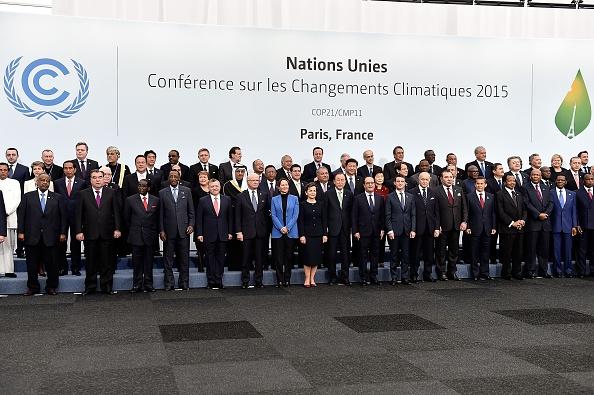The warming world

World leaders meet in Paris for the climate change conference in December 2015.
Living in one of the most affluent areas in the country, environmentally friendly practices are much more common than in other areas. However, even though Arlington maintains eight farmer’s markets, promotes a so-called “car-free diet” and builds LEED gold school buildings, it is not enough to save the whole planet.
Earth exists in what is known as the “Goldilocks zone,” which means that the planet is the exact distance from the sun for organic matter to develop. What allowed life to develop is the proper mixture of chemicals in conjunction with the proper filtration of sunlight. Greenhouse gasses in the atmosphere ensured that Earth was the proper temperature for life to develop.
According to the National Aeronautics and Space Administration (NASA), with too few greenhouse gases, Earth would freeze, and with too many, Earth would become a second Venus, where the greenhouse gases currently maintain a cozy 750 degrees Fahrenheit.
As humans have expanded technologically, oftentimes the ramifications of technology were unknown. During the first Industrial Revolution, no one understood the wider problems of coal plants pumping gas and carbon dioxide (CO2) into the air. Even if they had known, there would have been little they could do to change their ways. Global warming is caused by the greenhouse effect; when humans change the ratio of the gases composing the atmosphere, it retains more sunlight than it used to. This increases the overall temperature of the earth.
However, the way it is occurring now is manmade, not natural. Rising temperatures result in increased glacial melt, which in turn results in rising sea levels, and rising sea levels swallow coastlines and small islands. Increased CO2 levels acidify oceans, which harm sea life, and damage ocean ecosystems and ocean-centric industries such as seafood. Warmer ocean temperatures can give rise to superstorms like Patricia from 2015, who feed on warm waters. When warm waters are more widespread, storms can expand beyond their historic feeding grounds and wreak havoc all over the world. “When I teach climate change, I always try to remove the idea of politics and people’s opinions,” IB Environmental Systems teacher Mr. Ryan Miller said. “The science is there. The science is what it is, no matter what you believe.”
Much of the machinery used by humans to run day-to-day activities is supported by a depletable resource: fossil fuels. Consisting of coal, natural gas and petroleum, fossil fuels are the remnants of prehistoric plants and animals, decomposed into a flammable, highly valuable liquid that arguably sustains human life today. When fossil fuels are burned to provide electricity, they release carbon dioxide into the atmosphere. CO2 is the most important gas for regulating Earth’s temperature. However, fossil fuels can be generated in other ways. “In Indonesia, they’re burning their forests and their peatlands to make room for agriculture,” Mr. Miller said. “That contributes almost as much to climate change as we [in the U.S.] do when we use our fossil fuels for electricity production and transportation.” Some countries such as Germany, have taken up the cause of renewable energy. Under the hand of Chancellor Angela Merkel, Germany has become somewhat of an industry standard for sustainability, building offshore wind farms in the North Sea and shutting down nuclear reactors still in use.
Climate change is not only an environmental problem. It quickly becomes a political one when monetary concerns are involved. Fossil fuels are one of the most lucrative industries in the world and nations have gone to war over access to oil and natural gas. In addition, population growth contributes to environmental issues. When too many people strain an area’s resources, numerous negative outcomes occur, war, famine and disease being only three. Carrying capacity is the number of organisms of a particular type that an environment can support without degradation. In this case, the organisms are humans, and the environment is the entire planet. The human population reached seven billion in October 2011, and is growing at unprecedented rates.
Politics enters the room when legislation such as China’s One Child Policy is enacted. Implemented in 1980 to stall surging population growth, it remains unclear how effective the policy was at fulfilling its original goals of flattening population growth and reducing environmental strain on China’s resources. Politicians in many countries have attempted to use legislation to effect climate change, although oftentimes politics itself gets in the way of real change.
The future may hold promise, however. In December, representatives from countries like China and the United States met in Paris to discuss tangible, decisive legislation about climate change. In addition, 2017 marks the 20-year anniversary of the Kyoto Protocol, the 1997 international treaty that set emissions-reduction goals for all the countries that signed it. Currently, only four countries have achieved or surpassed their goal out of the more than 20 countries who made pledges. “That’s the biggest risk we face,” said President Obama, during a speech announcing the demise of the controversial Keystone XL pipeline. “Not acting.”







